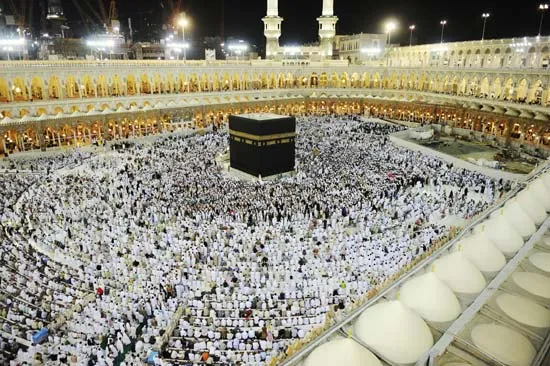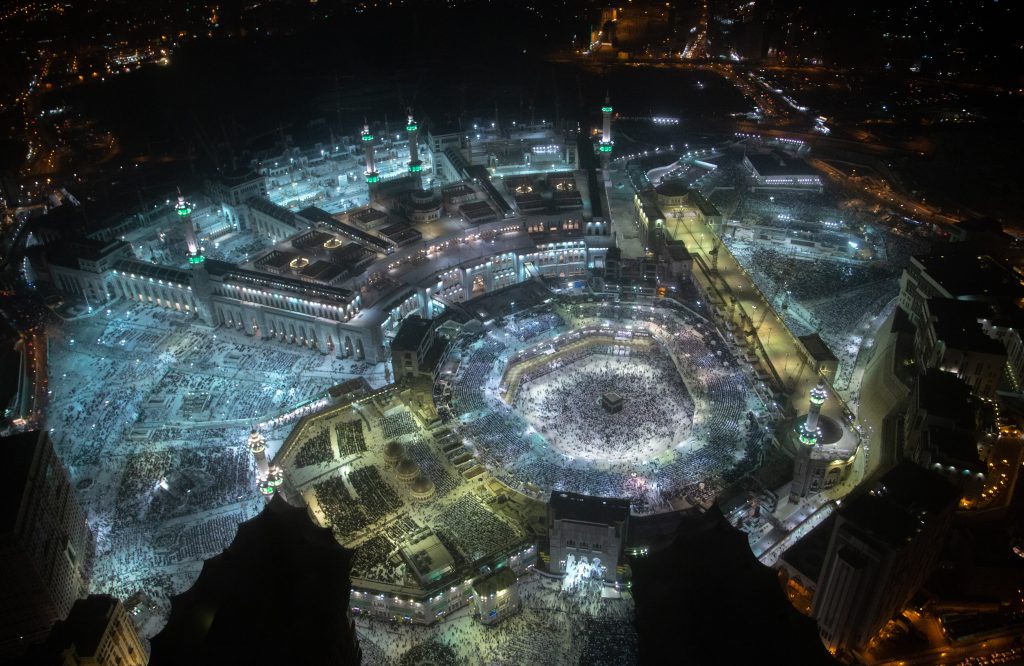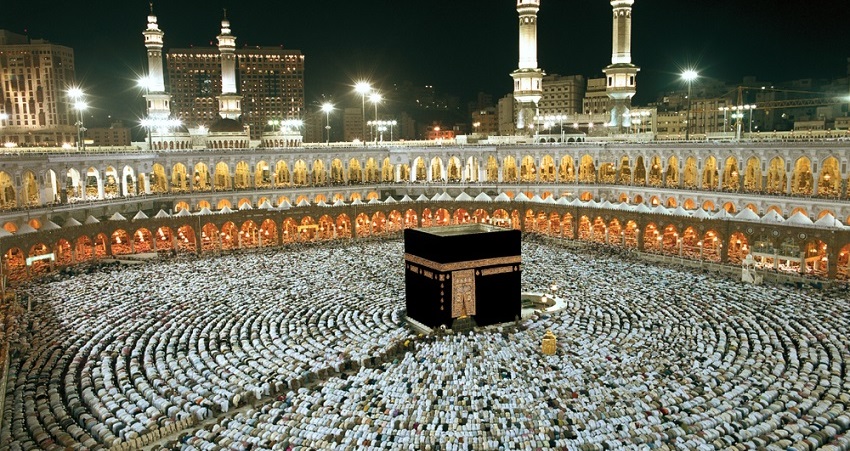The Grand Mosque of Mecca, or Masjid Al-Haram, stands as Islam’s spiritual epicenter, drawing millions for Hajj and Umrah. From its inception under ʿUmar ibn al-Khaṭṭāb to modern expansions, it symbolizes unity and devotion. Anchored by the Kaʿbah, pilgrims circumambulate it, affirming faith. With the revered Black Stone and ongoing expansions, it accommodates worshippers while maintaining sanctity.

Historical Background of the Grand Mosque of Mecca
The initial Muslim construction at the site commenced with a wall encircling the Kaʿbah, initiated by the second caliph, ʿUmar ibn al-Khaṭṭāb, in 638 CE. Subsequent caliphs introduced partial ceilings, columns, and ornamental details. A significant renovation occurred during the Abbasid caliphate of al-Mahdī (775–785), wherein the structure underwent expansion and reconstruction, resulting in the repositioning of outer walls to center the Kaʿbah within the courtyard.
In the early 14th century, the mosque underwent reconstruction following damage caused by fire and flooding. Furthermore, in 1571, Ottoman Sultan Selim II commissioned the renowned court architect Sinan to enhance the mosque’s infrastructure. Sinan’s interventions included replacing the flat roof with smaller domes, which constitute the oldest surviving elements of the contemporary structure.
Significance of the Grand Mosque in Islam
It is believed that many prophets have emerged, imparting their wisdom and sometimes engaging in battles to uphold and spread Islam, securing the faith in the hearts of their followers. Today, during the sacred rituals of Hajj and Umrah, Muslims converge in Masjid Al-Haram to collectively offer prayers, carrying forward the rich tradition and teachings of Islam.
Location and Layout of the Grand Mosque of Mecca
The mosque features a rectangular central courtyard encircled by covered prayer areas, with the focal point being the Kaʿbah—a structure crafted from gray stone and marble. Throughout most of the year, this sacred shrine is draped with an expansive black cloth. Standing at a towering height of about 50 feet (15 meters), the Kaʿbah boasts dimensions of approximately 35 by 40 feet (10 by 14 meters) at its base. Its orientation aligns roughly with the points of the compass. Within its interior, three pillars uphold the roof, alongside numerous hanging silver and gold lamps. Pilgrims to Mecca traditionally circumambulate the Kaʿbah seven times as part of their pilgrimage rituals.
Nestled into the eastern corner of the Kaʿbah resides the revered Black Stone of Mecca. According to tradition, this stone was bestowed upon Adam as a means of seeking forgiveness for his sins upon departing paradise. Legend holds that the stone, originally white, has darkened over time as it absorbed the sins of countless pilgrims who have kissed and touched it in reverence.

Key Features and Landmarks within the Grand Mosque of Mecca
The mosque features a rectangular central courtyard encircled by covered prayer areas, with the focal point being the Kaʿbah—a structure crafted from gray stone and marble. Throughout most of the year, this sacred shrine is draped with an expansive black cloth. Standing at a towering height of about 50 feet (15 meters), the Kaʿbah boasts dimensions of approximately 35 by 40 feet (10 by 14 meters) at its base. Its orientation aligns roughly with the points of the compass. Within its interior, three pillars uphold the roof, alongside numerous hanging silver and gold lamps. Pilgrims to Mecca traditionally circumambulate the Kaʿbah seven times as part of their pilgrimage rituals.
Nestled into the eastern corner of the Kaʿbah resides the revered Black Stone of Mecca. According to tradition, this stone was bestowed upon Adam as a means of seeking forgiveness for his sins upon departing paradise. Legend holds that the stone, originally white, has darkened over time as it absorbed the sins of countless pilgrims who have kissed and touched it in reverence.
Maintenance and Expansion Projects of the Grand Mosque of Mecca
Throughout the 20th century, the Grand Mosque underwent multiple modernizations and expansions. The introduction of electric lighting occurred under the reign of Ḥusayn ibn ʿAlī (emir of Mecca 1908–16 and king of Hejaz 1916–24), with an electric public-address system following suit in 1948.
However, the most significant transformations unfolded in the latter half of the century. The surge in pilgrims to Mecca due to commercial air travel, coupled with Saudi Arabia’s newfound oil wealth, fueled extensive construction endeavors.
The initial Saudi-led enlargement commenced in 1955 during King Saud’s reign, culminating in completion by 1973. This expansion enveloped the Ottoman mosque, amplifying the total area from roughly 290,000 square feet (27,000 square meters) to approximately 1,630,000 square feet (152,000 square meters), and accommodating up to 500,000 worshippers. The passageway between al-Ṣafā and al-Marwah was also integrated into the mosque’s structure.
Another pivotal expansion, initiated by King Fahd in 1984, aimed to accommodate the escalating numbers of hajj pilgrims, exceeding one million annually in the 1980s. To facilitate this, buildings surrounding the mosque were razed to make way for a widened paved area. Innovative measures such as escalators, pedestrian tunnels, and passageways were introduced to alleviate congestion during the hajj. Furthermore, modern communication systems and advanced indoor and outdoor air-conditioning systems were installed.
Following these enhancements, the Grand Mosque expanded to approximately 3,840,000 square feet (356,800 square meters), capable of hosting up to 820,000 worshippers.




